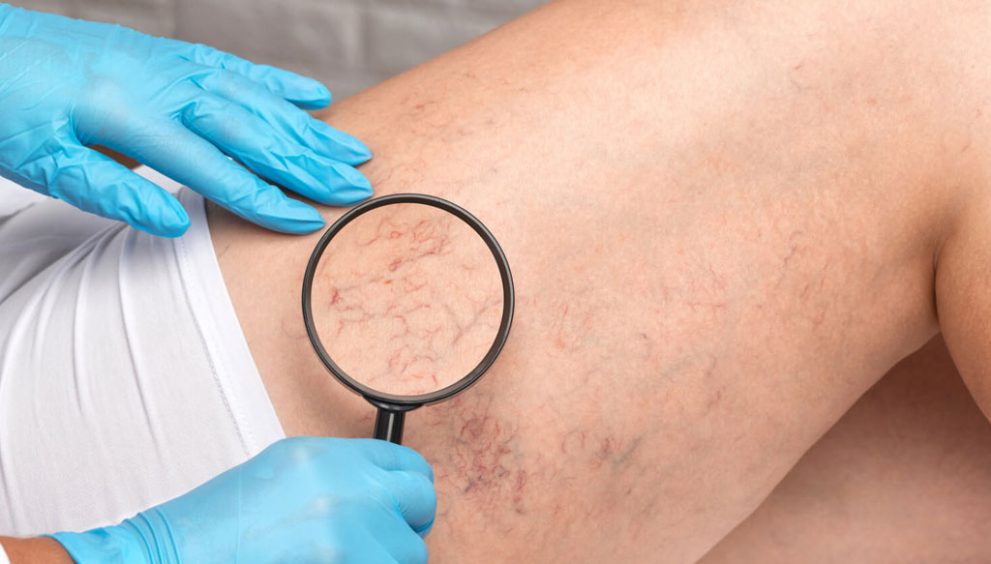Chronic Venous Insufficiency: Causes, Symptoms, Treatment, and Prevention

Chronic Venous Insufficiency (CVI) is a common yet often underdiagnosed condition affecting millions worldwide. It occurs when the veins in the legs struggle to return blood to the heart, leading to blood pooling and a range of uncomfortable symptoms. Left untreated, CVI can cause serious complications, including leg ulcers and deep vein thrombosis. This comprehensive guide explores the causes, symptoms, diagnosis, treatment options, and prevention strategies for chronic venous insufficiency, optimized for those seeking answers about this vascular condition.
What is Chronic Venous Insufficiency?
Chronic Venous Insufficiency (CVI) is a medical condition where the veins, particularly in the legs, fail to efficiently transport blood back to the heart. Healthy veins rely on one-way valves to prevent blood from flowing backward. When these valves become damaged or weakened, blood pools in the lower extremities, increasing pressure in the veins and causing a range of symptoms. CVI affects approximately 20-40% of adults in the United States, with higher prevalence among women and older individuals.
Understanding CVI is crucial for early intervention, as it can progress from mild discomfort to severe complications if ignored. This guide provides detailed insights to help you recognize, manage, and prevent chronic venous insufficiency.
Causes of Chronic Venous Insufficiency
CVI develops when the venous system is compromised, often due to damaged or dysfunctional vein valves. Several factors contribute to this condition:
- Deep Vein Thrombosis (DVT): Blood clots in the deep veins can damage valves, impairing blood flow and leading to CVI.
- Varicose Veins: Enlarged, twisted veins can weaken valve function, contributing to blood pooling.
- Prolonged Sitting or Standing: Occupations or lifestyles involving long periods of immobility increase pressure in leg veins, weakening them over time.
- Obesity: Excess weight puts additional strain on the veins, increasing the risk of valve dysfunction.
- Pregnancy: Hormonal changes and increased blood volume during pregnancy can weaken vein walls and valves.
- Aging: As we age, veins lose elasticity, and valves may weaken, making CVI more common in individuals over 50.
- Family History: A genetic predisposition to weak veins or valve issues increases the likelihood of developing CVI.
- Injury or Surgery: Trauma to the legs or prior surgeries can damage veins, leading to insufficiency.
- Sedentary Lifestyle: Lack of physical activity reduces muscle pumping action, which helps veins return blood to the heart.
Women are more likely to develop CVI due to hormonal influences, such as those from pregnancy or hormone therapy. Other risk factors include smoking, high blood pressure, and a history of leg injuries.
Symptoms of Chronic Venous Insufficiency
CVI symptoms vary in severity, often worsening over time if untreated. Common signs include:
- Swelling (Edema): Swelling in the legs, ankles, or feet, especially after prolonged standing or sitting.
- Leg Pain or Aching: A heavy, aching, or cramping sensation in the legs, often worse at the end of the day.
- Varicose Veins: Visible, bulging veins that may appear twisted or rope-like.
- Skin Changes: Discoloration (brownish or reddish skin), thickening, or hardening of the skin around the ankles.
- Itching or Burning: Persistent itching or a burning sensation in the affected areas.
- Leg Fatigue: A feeling of heaviness or tiredness in the legs, particularly during physical activity.
- Leg Ulcers: Open sores, typically near the ankles, that are slow to heal and prone to infection.
- Restless Legs: An urge to move the legs, especially at night, due to discomfort.
Symptoms may worsen in hot weather or during long periods of immobility. If you notice these signs, consult a healthcare professional for an accurate diagnosis and treatment plan.
Diagnosing Chronic Venous Insufficiency
Early diagnosis is critical to prevent complications. A healthcare provider will typically:
- Medical History Review: Discuss symptoms, family history, and risk factors like pregnancy, obesity, or DVT.
- Physical Examination: Check for swelling, varicose veins, skin changes, or ulcers in the legs.
- Duplex Ultrasound: This non-invasive imaging test evaluates blood flow and checks for valve dysfunction or blood clots.
- Venography: In rare cases, a contrast dye is injected into the veins to visualize blockages or abnormalities via X-ray.
- CT or MRI Scans: These may be used to rule out other conditions or assess severe cases.
A vascular specialist, such as a phlebologist or interventional radiologist, can confirm CVI and recommend appropriate treatment based on the severity of the condition.
Complications of Untreated CVI
If left untreated, chronic venous insufficiency can lead to serious health issues:
- Venous Leg Ulcers: Persistent sores that are difficult to heal and prone to infection.
- Deep Vein Thrombosis (DVT): Blood clots in deep veins, which can be life-threatening if they travel to the lungs (pulmonary embolism).
- Superficial Thrombophlebitis: Inflammation and clotting in surface veins, causing pain and swelling.
- Chronic Skin Changes: Permanent discoloration or thickening of the skin, increasing infection risk.
- Cellulitis: Bacterial skin infections that can spread if not treated promptly.
Early intervention is essential to manage symptoms and prevent these complications.
Treatment Options for Chronic Venous Insufficiency
Treatment for CVI aims to improve blood flow, reduce symptoms, and prevent complications. Options range from conservative measures to advanced medical procedures:
1. Lifestyle Changes
- Exercise: Regular physical activity, such as walking or swimming, promotes blood circulation and strengthens calf muscles, which act as a pump for veins.
- Weight Management: Losing excess weight reduces pressure on leg veins, alleviating symptoms.
- Leg Elevation: Elevating the legs above heart level for 15-30 minutes several times a day helps reduce swelling.
- Avoid Prolonged Immobility: Take breaks to move around if you sit or stand for long periods.
- Healthy Diet: A diet rich in fiber, antioxidants, and low in salt can support vascular health and reduce swelling.
2. Compression Therapy
- Compression Stockings: These specially designed stockings apply pressure to the legs, improving blood flow and reducing swelling. They come in various strengths (e.g., 20-30 mmHg) and should be prescribed by a doctor.
- Compression Bandages: Used for severe cases or ulcers to promote healing and reduce edema.
3. Medications
- Venotonics: Drugs like diosmin or horse chestnut extract may improve vein tone and reduce symptoms.
- Antibiotics: Prescribed for infections or ulcers caused by CVI.
- Blood Thinners: Used in cases of DVT to prevent clot formation.
4. Minimally Invasive Procedures
- Sclerotherapy: A chemical solution is injected into affected veins, causing them to collapse and redirect blood to healthier veins.
- Endovenous Laser Ablation (EVLA): Laser energy seals off damaged veins, rerouting blood flow.
- Radiofrequency Ablation (RFA): Similar to EVLA, this uses radiofrequency energy to close faulty veins.
- Venous Stenting: A stent is placed in a narrowed vein to keep it open and improve blood flow.
5. Surgical Options
- Vein Stripping: Removal of severely damaged veins, typically reserved for advanced cases.
- Vein Bypass: Redirecting blood flow around a blocked vein using a graft.
- Valve Repair: Surgical reconstruction of damaged vein valves, though less common due to advancements in minimally invasive techniques.
6. Wound Care for Ulcers
- Specialized dressings, debridement, and infection management are critical for healing venous leg ulcers. Compression therapy is often combined with wound care.
Treatment plans are tailored to the individual’s symptoms, severity, and overall health. Consult a vascular specialist to determine the best approach.
Preventing Chronic Venous Insufficiency
While some risk factors, like genetics or aging, cannot be controlled, you can take steps to reduce your risk of developing or worsening CVI:
- Stay Active: Engage in regular exercise, such as walking, cycling, or yoga, to promote healthy blood flow.
- Wear Compression Stockings: If you’re at risk (e.g., family history, pregnancy), these can prevent vein issues.
- Maintain a Healthy Weight: Avoid excess weight to reduce pressure on leg veins.
- Avoid Tight Clothing: Tight garments around the waist or legs can restrict blood flow.
- Stay Hydrated: Proper hydration supports healthy circulation.
- Quit Smoking: Smoking damages blood vessels and increases the risk of vein issues.
- Monitor Leg Health: Seek medical advice if you notice swelling, pain, or skin changes.
Living with Chronic Venous Insufficiency
Managing CVI is a lifelong commitment, but with proper care, most people can lead active, comfortable lives. Regular follow-ups with a healthcare provider, adherence to treatment plans, and lifestyle adjustments can significantly improve quality of life. Support groups and online communities can also provide emotional support and practical tips for coping with CVI.
When to See a Doctor
Seek medical attention if you experience:
- Persistent leg swelling or pain.
- Visible varicose veins or skin changes.
- Open sores or ulcers on the legs.
- Sudden leg swelling, warmth, or redness, which could indicate a blood clot.
Early intervention can prevent complications and improve outcomes.
Conclusion
Chronic Venous Insufficiency is a manageable condition with the right diagnosis and treatment. By understanding its causes, recognizing symptoms early, and adopting preventive measures, you can protect your vascular health and reduce the risk of complications. If you suspect CVI, consult a healthcare professional for a thorough evaluation and personalized treatment plan.













